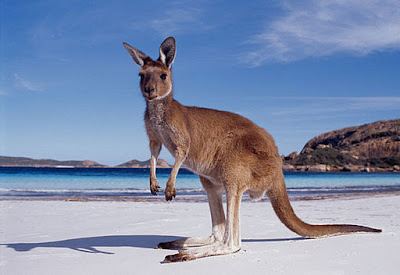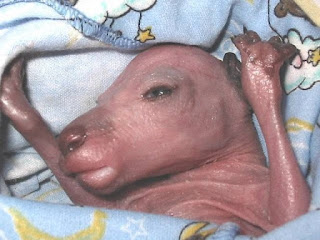Great White Sharks , also known as great whites, white pointers, white sharks, or white death, are the ocean's most scariest and feared predator, they can be found on all coasts of Australia.
The largest Great white shark reliably measured was a 6.0 m (19.7 ft) individual reported from Ledge Point, Western Australia in 1987. However, a larger great white shark specimen was verified by T. C. Tricas and J. E. McCosker in 1984. This specimen was 6.4 m (21 ft) long and had a body mass of about 3,324 kg (7,330 lb).
A non confirmed great white shark was captured near Kangaroo Island in Australia on April 1, 1987. This shark was estimated to be more than 7 m (23 ft) long.
Great white sharks, like all other sharks, have an extra sense given by the Ampullae of Lorenzini, which enables them to detect the electromagnetic field emitted by the movement of living animals. Every time a living creature moves it generates an electrical field and great whites are so sensitive they can detect half a billionth of a volt. Even heart beats emit a very faint electrical pulse. If close enough, the shark can detect even that faint electrical pulse. Most fish have a less-developed but similar sense using their body's lateral line.
Great white sharks infrequently attack and sometimes even sink boats. In a few cases they have attacked boats up to 10 metres (33 ft) in length. They have bumped or knocked people overboard, usually 'attacking' the boat from the stern.
Great white sharks are carnivorous, and prey upon fish (e.g. tuna, rays, other sharks), cetaceans (i.e., dolphins, porpoises, whales), pinnipeds (e.g. seals, fur seals, and sea lions), sea turtles, sea otters, and seabirds. Great whites have also been known to eat objects that they are unable to digest. Upon approaching a length of nearly 4 metres (13 ft), great white sharks begin to target predominately marine mammals for food. These sharks prefer prey with a high content of energy-rich fat. Shark experts used a rod-and-reel rig and trolled carcasses of a seal, a pig, and a sheep to their boat. The sharks attacked all three baits but rejected the sheep carcass.
It is not very well known why sharks attack us. With millions on people swimming in Australian waters every day and only about one fatal shark attack per year, we are surely not the favourite food of sharks. Sharks are known to like seal meat and some scientists believe that fatal shark attacks happen when they mistake us for seals. Others argue that sharks would have brains big enough to distinguish us from seals and suppose it may be a combination of reasons which varies from case to case.
There have been 195 known fatal shark attacks in Australia.
More than 900 men were thrown to the mercy of possible Great white sharks in the Pacific Ocean, when their American warship, the USS Indianapolis ,carrying parts and the enriched uranium for the atomic bomb Little Boy, which would later be dropped on Hiroshima was split in two by Japanese torpedoes in July 1945. When rescuers arrived four days later, they found 579 men dead, with many chewed to pieces by circling sharks. Woody James, among just 316 survivors, said later: "The sharks were around, hundreds of them...Everything would be quiet and then you'd hear somebody scream and you knew a shark had got him."
Crew of the USS Indianapolis (CA-35)

















































